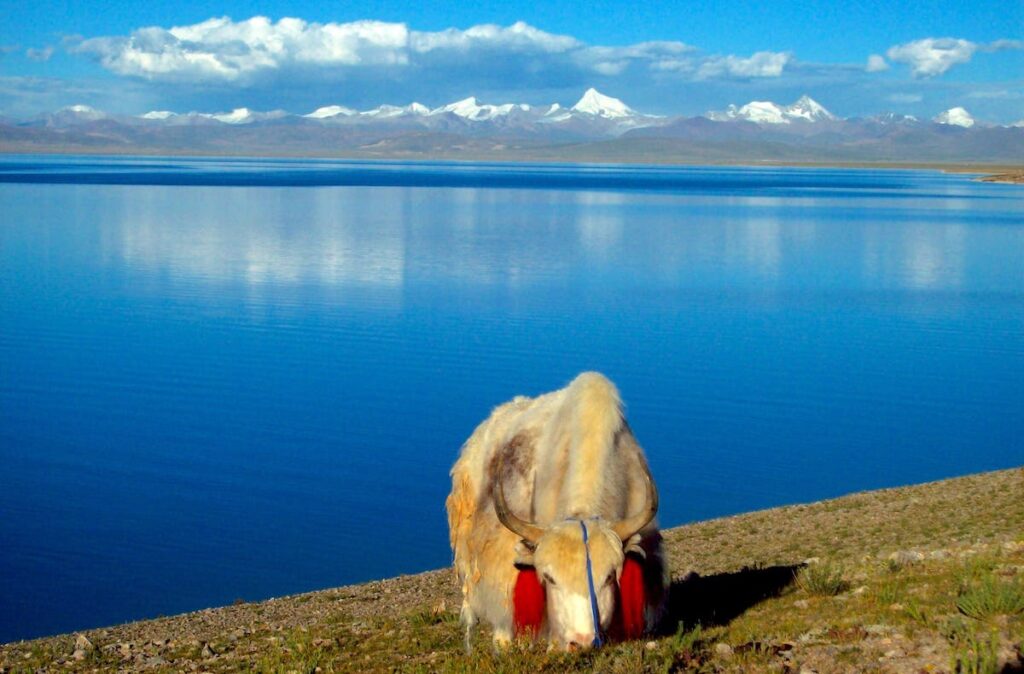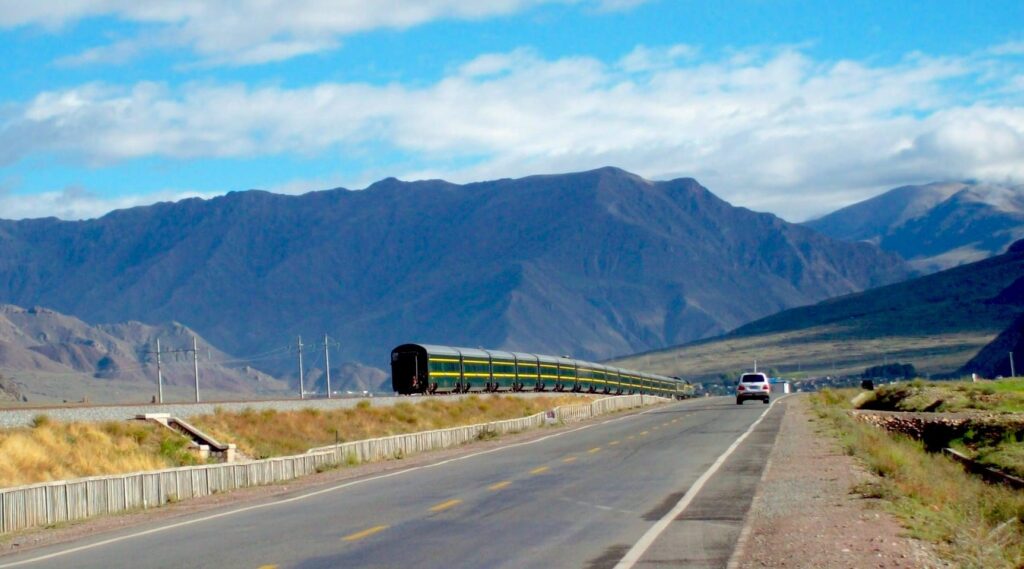Altitude sickness is one of the most irritating problems when traveling to the Tibetan plateau’s high altitudes. For many people, arriving in Lhasa often means feeling altitude sickness symptoms, from the mildest headache symptom to nausea, dizziness, and sleepless nights that can happen.

Altitude sickness is actually a milder form of Acute Mountain Sickness (AMS) and is the negative aspect of traveling to high altitudes above 2,400 meters (8,000 ft). With altitude sickness being the mildest form, if untreated, it can escalate to Acute Mountain Sickness very easily. This can require hospitalization and serious treatment.
It does not end there, though. Failing to treat altitude sickness or AMS can actually lead to much more serious symptoms, such as High-Altitude Pulmonary Edema (HAPE) or High-Altitude Cerebral Edema (HACE), both fatal. There is also the chance that prolonged exposure to high altitudes can cause Chronic Mountain Sickness. This then requires the patient to be immediately removed to sea level, and if extreme, can still be fatal even after moving to lower altitudes.
However, there is no hard and fast rule as to who gets altitude sickness. This is because even if you did not get it the last time you traveled to Tibet, you will not receive it again this time. Physical fitness does not reduce AMS risk.
Causes of altitude sickness
Altitude sickness is normally caused by an increase in elevation above 2,400 meters. The higher you acclimate, the more likely you will suffer from altitude sickness symptoms. The main reason altitude sickness occurs is due to oxygen levels in the air at higher altitudes. At sea level, oxygen in the atmosphere is around 21 percent, which is what our bodies are designed to breathe. Every time we breathe in, the lungs remove a certain amount of oxygen from the air, transferring it to the red blood cells in the body. These cells carry much-needed oxygen to all our organs, including the brain.

As you climb higher up in altitude, the air gets thinner, due to lower barometric pressure. There is still the same amount of oxygen in the air, 21 percent. However, the air is stretched out more, which means we take in less air with every breath. This also means that we take in less oxygen with every breath and the lungs do not process enough oxygen to meet the body’s needs.
The low oxygen content in the bloodstream means that your limbs feel heavy, you feel short of breath, and get headaches. These are some of the symptoms of AMS because the body lacks oxygen.
Over time, no more than a couple of days, the body automatically adjusts to the increase in altitude and decrease in available oxygen. This is known as acclimatization. As the body acclimatizes, it produces more red blood cells to carry oxygen around the body. Producing more red blood cells pushes the lungs to extract more oxygen from the air we breathe than at sea level. This can sometimes cause over-oxygenation.
As the body adapts, the increased number of red blood cells carries more oxygen around the body. This brings things back to normal as the organs and brain recover. This acclimatization, however, requires a certain set of requirements to work quickly.
Symptoms of altitude sickness
There are many symptoms of altitude sickness, including headaches, nausea, and dizziness. In addition, there is shortness of breath and fatigue. These are not the only symptoms, though, and any of these symptoms can lead to altitude sickness, even if you do not have a headache. Any combination of symptoms, including headaches (although that can also mean you are dehydrated) can mean altitude sickness.
The complete list of AMS symptoms is:
Gastrointestinal Symptoms: Loss of appetite, nausea, vomiting, excessive flatulence
Nervous Symptoms: Fatigue or weakness, headache with or without dizziness or lightheadedness, insomnia, “pins and needles” sensation
Symptoms include: Peripheral edema (swelling of hands, feet, and face)
Respiratory Symptoms: Nose bleeding, shortness of breath upon exertion
Cardiovascular Symptoms: Persistent rapid pulse
Other Symptoms: A general malaise feeling
More severe symptoms may indicate that you are suffering from Chronic Altitude Sickness or one of the serious and life-threatening forms of AMS. The major symptoms of HAPE (which causes fluid to enter the lungs) are a persistent dry cough, fever, shortness of breath even when resting, and symptoms similar to bronchitis. HACE, a brain swelling, usually includes a headache that does not respond to analgesics. They also include an unsteady gait when walking, gradual loss of consciousness, an increase in nausea and vomiting, and any form of retinal hemorrhage.
How to reduce AMS risk
While all of this may sound scary, there are some simple ways to reduce the risk of altitude sickness. Part of that is knowledge of what the symptoms are so that you can do something about it before it gets serious. Not everyone will get altitude sickness, and the symptoms usually subside after one to two days, as long as you follow a few simple rules.
The main recommended way to reduce AMS risk is to take a cautious approach to high and extreme elevations. Ideally, you should climb no more than 300 meters per day before sleeping. Even if you ascend much higher, you should return to a lower altitude no more than 300 meters above your starting point before sleeping. This allows the body to acclimatize slowly over your ascent, reducing AMS risk drastically.
However, for many people visiting Tibet, this is not possible, since you cannot ask the train to stop every 300 meters at altitude so you can sleep for the night. The other way to reduce AMS risk when traveling to Tibet is to pre-acclimatize. When traveling to altitudes of 5,000 meters and above, it is recommended to stop at an elevation between 1,500 and 3,000 meters. This is to get used to the place first. After a day or two at intermediate altitude, your body should have adapted, and be ready for the next elevation increase.

The most convenient place for this when traveling to Tibet is Xining, in Qinghai Province, where the Qinghai Tibet Railway starts. At an elevation of 2,275 meters, it is an ideal altitude to help you pre-acclimatize. Once in Lhasa, you should also take a day or two to acclimatize in order to minimize your chances of altitude sickness.
Other ways to reduce AMS risk are to avoid strenuous activity, such as hiking and climbing, at least for the first 24-48 hours. Alcohol, coffee, and sleeping pills are forms of respiratory depressants that can reduce oxygen intake causing AMS symptoms even if you are doing nothing. Smoking can also increase the risk of AMS, as the lungs cannot process enough oxygen, even after producing more red blood cells.
Dehydration is the biggest cause of altitude sickness when traveling to Tibet. Despite the plateau region’s cold climate, it is easier to get dehydrated at high altitudes than in extremely hot weather. Staying hydrated by drinking plenty of water throughout the day can reduce AMS risk drastically. Alcohol and coffee can also cause dehydration, so should be avoided.
Available treatments for altitude sickness
There are several treatments for altitude sickness available over the counter in most Asian countries. Drugs such as Acetazolamide – known mostly by its brand name, Diamox – may help people ascend rapidly to altitudes above 3,000 meters. It can also be taken prior to ascending, under a strict dosage regime, to prevent symptoms. The recommended dosage, according to the Centers for Disease Control in the United States, is 125 mg every 12 hours. This is for at least 24 hours before the ascent to the time you reach the highest point of your trip.

However, despite the proliferation of websites that will tell you that you can take Diamox “to prevent getting altitude sickness”, it is not recommended by the CDC to use it as a substitute for a gradual ascent, and can have minor side effects such as tingling in the hands and feet, a massive increase in respiratory speed, and a reduction in your ability to maintain consistently increased breathing. Before taking Diamox, or any other brand of acetazolamide, you should consult your doctor before leaving home. You should listen to his advice based on his health knowledge.
If you do get altitude sickness, ibuprofen, a non-steroidal anti-inflammatory drug available without a prescription, can ease the headaches and nausea associated with AMS. Oxygen enrichment and intervals during acclimatization can help reduce symptoms, but they should not be used constantly, or they will prevent the body from acclimatizing at all.

[…] planning a trip to Tibet, it’s important to be prepared for the possibility of high altitude sickness. This condition can occur when you suddenly go from a lower altitude to a much higher one, and it […]